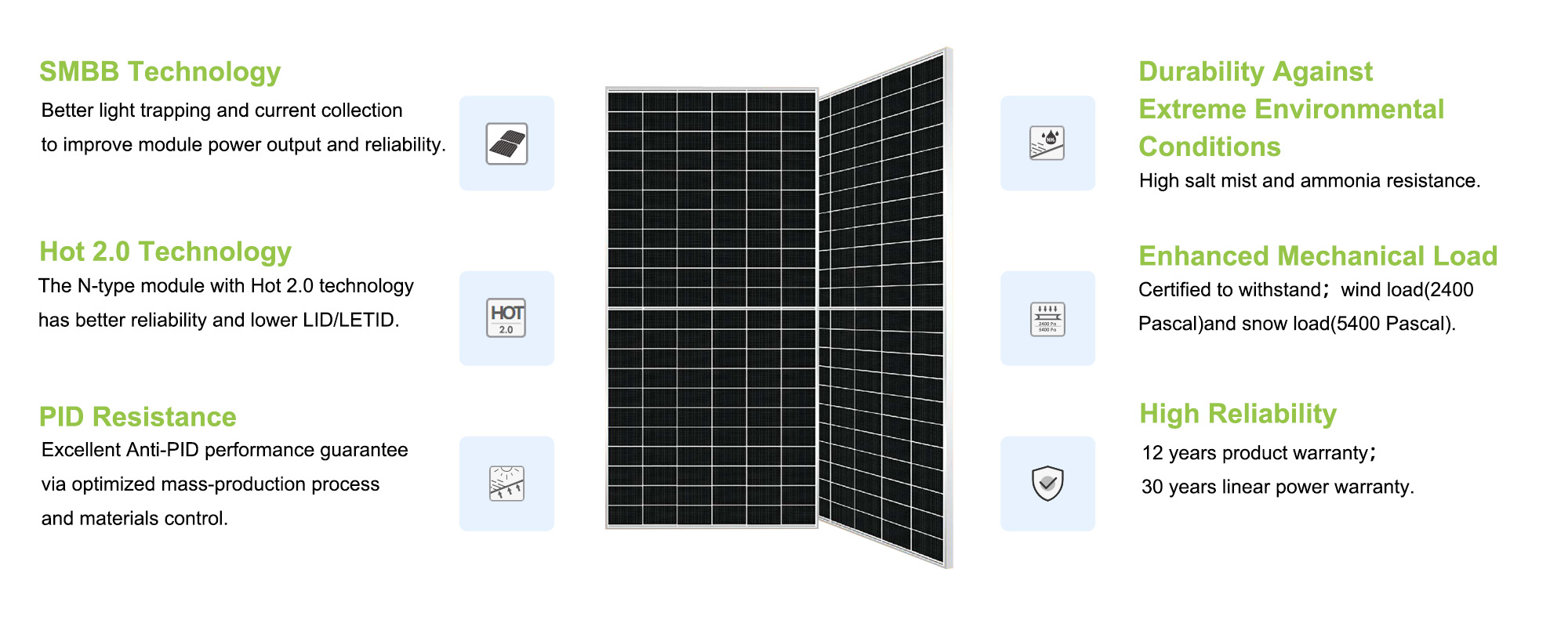In the field of new energy photovoltaics, every technological innovation signifies a further exploration of solar energy utilization efficiency. P-type and N-type solar modules, as the two representatives of crystalline silicon cells, are at the forefront of this efficiency race. What are the main differences between n-type and p-type solar panels? Let’s see it in detail.
Raw Material Silicon Wafers
The fundamental difference between P-type and N-type components stems from the type of silicon wafers used in their production. P-type components use P-type silicon wafers, which are created by adding trivalent boron to pure silicon wafers, resulting in a semiconductor environment dominated by holes. In contrast, N-type components use N-type silicon wafers, which are formed by incorporating pentavalent phosphorus, leading to a semiconductor structure where electrons are the majority carriers. This difference in the basic materials determines the fundamental performance differences between the two types of components.
what is p type solar panel?
In terms of manufacturing technology, P-type solar modules have experience from traditional Aluminum Back Surface Field (Al-BSF) to PERC technology. PERC technology effectively improves the photoelectric conversion efficiency of cells by adding a passivation layer on the back of the cell. However, as PERC technology gradually approaches its theoretical efficiency limit, the further development of P-type solar modules faces challenges.

P Type Solar Panel
what is n type solar panel?
The manufacturing technology for N-type modules is more diverse, including TOPCon solar modules, HJT solar modules, PERT/PERL solar modules, IBC solar modules, and others. These technologies not only have high conversion efficiencies but also exhibit characteristics such as resistance to degradation and low-temperature coefficients, showing greater market potential. Particularly, HJT technology, with its unique heterojunction structure, achieves higher open-circuit voltage and short-circuit current, making it a standout among N-type modules.

N-type Panels
Difference between n type and p type solar panels
In terms of actual performance, N-type modules typically exhibit higher conversion efficiency and better stability than PERC solar panels. This is attributed to the high electron mobility of N-type silicon material and advanced manufacturing technologies. Additionally, N-type solar modules perform better under bifacial power generation and low light conditions compared to P-type modules, which makes them more widely applicable in fields such as distributed photovoltaics and poverty alleviation through photovoltaics. However, the high cost of N-type solar modules has been an obstacle to their large-scale adoption. At present, the industrialization of N-type technology is still in its early stages, with relatively high production costs, resulting in high market prices. This causes many consumers to still prefer P-type solar modules, which offer a better price-performance ratio when choosing photovoltaic solar panels.
Advantages of N-type Solar Modules
- Higher efficiency: The photoelectric conversion efficiency of N-type solar modules is higher than that of PERC modules, especially in low-light conditions.
- Lower temperature coefficient: The N-type temperature coefficient is lower, and the N-type solar modules can have relatively stable performance in high temperatures, suitable for hot regions.
- Higher resistance to degradation: N-type solar modules have higher resistance to degradation, and can maintain higher performance levels over long-term use.
Overall, the competition between P-type and N-type modules is actually a reflection of the continuous progress in photovoltaic technology and the ever-changing market demands. In this race, whether it is the persistence of P-type or the challenge of N-type, both will drive the photovoltaic industry towards higher efficiency and more environmentally friendly directions. For consumers, the choice of which type of module to use will depend on their actual needs and their expectations for return on investment.
HBOWA New Energy manufactures PERC, TOPCon, HJT, single glass, and dual glass solar panels to meet the needs of the photovoltaic industry market. We also support OEM and ODM services, if you have any special needs, feel free to let us know.



